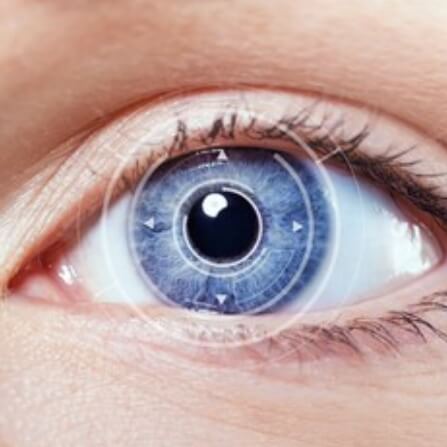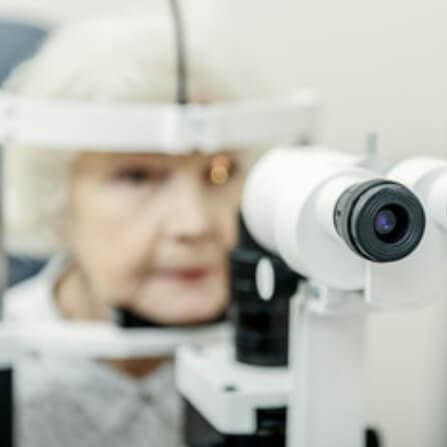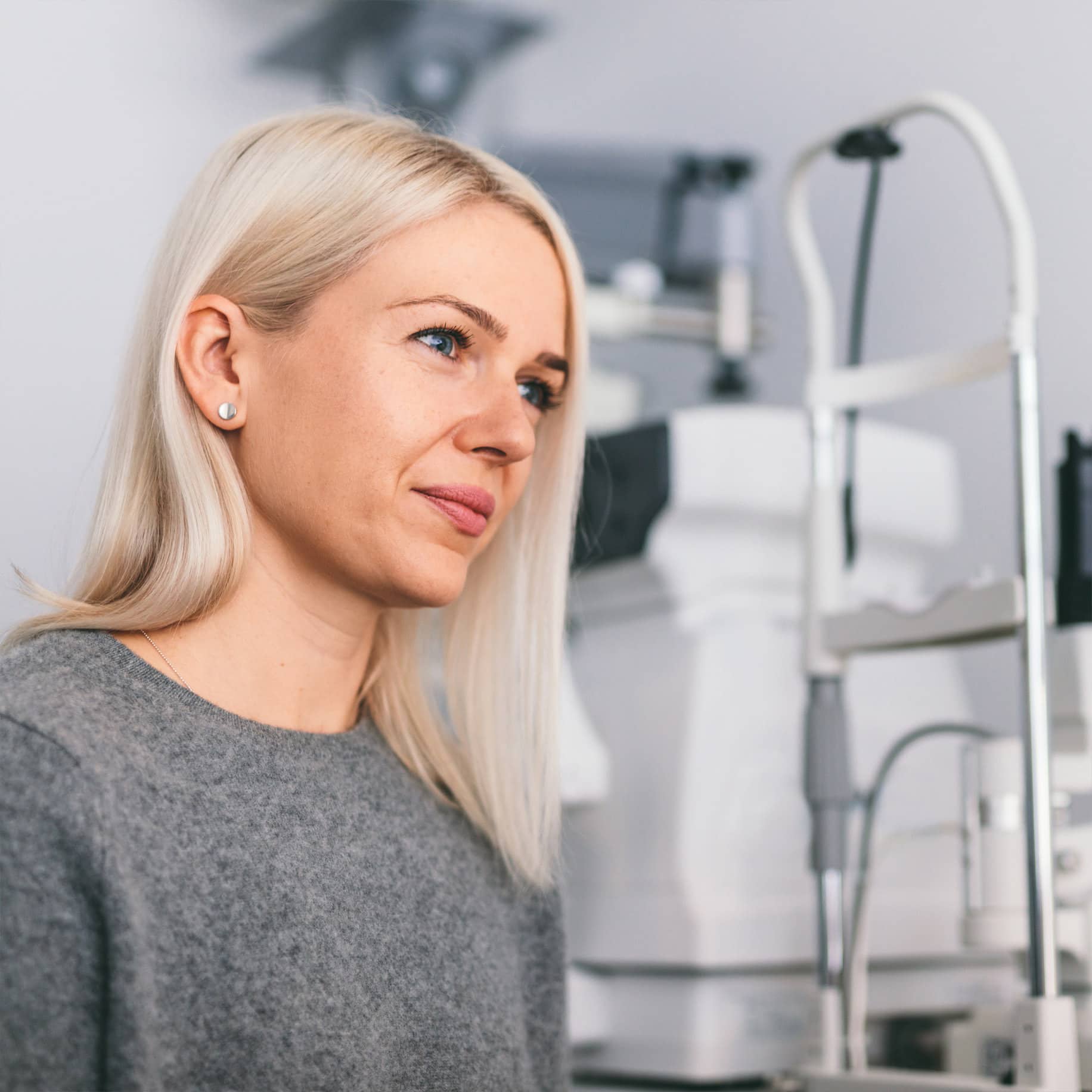COMMON EYE PROBLEMS
There are a number conditions that can affect your eyes. Below is a list of the most common problems that may be associated with your eyes. If you have any concerns about your eye health, book an appointment to see your our optometrist today.
MYOPIA
A person with myopia or short sight can see clearly objects close to them, but not far away. This is caused by the shape of the eye - either the eyeball is slightly too long or the cornea (the clear covering of the front of the eye) is too steeply curved. It is corrected by spectacles or contact lenses with lenses which are 'minus' or concave in shape. If you are short sighted your prescription will have a minus lens power eg -2.50D.
HYPEROPIA
A person with hypermetropia/hyperopia or long sight can see clearly objects far away from them, but not close to them. This is caused by the shape of the eye - the eyeball is slightly too short. It is corrected by spectacles or contact lenses with lenses which are 'plus' or convex in shape. If you are long sighted your prescription will have a plus lens power eg +2.50D.
Presbyopia
As a person ages so do their eyes. The crystalline lenses become less flexible and thicker. The result is presbyopia, and people begin to notice its effects during their forties. As a result of these changes objects close to them become blurred and the point of closest focus gradually moves further away from the eyes.
Astigmatism
A person with astigmatism has an unevenly curved cornea (the clear covering of the front of the eye) or an unevenly curved lens inside their eye. It can be corrected by spectacles with a cylinder shape built into the lenses at a certain angle. Contact lenses can also correct astigmatism - mild astigmatism can be corrected by an ordinary gas-permeable lens. Those who prefer a soft lens or have higher amounts of astigmatism can buy specially designed 'toric' soft lenses. Toric lenses are more expensive than ordinary soft lenses but they’re becoming available in an increasingly wide range of prescriptions and forms.
Cataracts
There are several causes of cataract. The most common form of cataract is associated with ageing, although not everyone develops cataracts as they get older. Cataracts may be caused by an eye injury: a sharp blow, a chemical or electrical burn or a very high dose of radiation. Rare causes of cataracts include side-effects of some long-term medications and eye diseases. Genetics can also rarely lead to the development of cataracts at birth or early in childhood. In the early stages of cataract, magnifying lenses, prescription glasses or stronger lighting can all be used to help the person continue with their daily activities. When vision deteriorates further, cataract surgery can help. It is a routine and very successful procedure, which involves replacing the cloudy lens with an artificial lens.
Glaucoma
Glaucoma is a leading cause of blindness throughout the world. Its exact cause is not known. Glaucoma refers to a group of eye diseases that have common features. These features can include raised intraocular pressure, damage to the optic nerve and sight loss. There are several types of glaucoma, including primary open-angle, closed-angle, secondary, congenital and normal tension. The most common is primary open-angle glaucoma. In many cases, if caught early, the progressive sight loss of primary open-angle glaucoma can be prevented or slowed by drug treatment or surgery.
Diabetes
Diabetes is an inability to metabolise the sugars and carbohydrates in the body due to a lack of the hormone insulin. It affects over 4% of the population in Australia and is on the rise. There are two forms of diabetes, known as Type I and Type II. Type I (insulin-dependent diabetes) commonly appears in younger people (10-20 years) and Type II (non-insulin-dependent diabetes) commonly in older people. Type II can sometimes be controlled by careful control of diet. A diagnosis of diabetes does not mean that one will necessarily be affected by eye problems, although it does mean that there is a greater risk particularly over a number of years, so it is important to have a regular eye examination with an optometrist.



ASTIGMASTISM
A person with astigmatism has an unevenly curved cornea (the clear covering of the front of the eye) or an unevenly curved lens inside their eye. It can be corrected by spectacles with a cylinder shape built into the lenses at a certain angle. Contact lenses can also correct astigmatism - mild astigmatism can be corrected by an ordinary gas-permeable lens. Those who prefer a soft lens or have higher amounts of astigmatism can buy specially designed 'toric' soft lenses. Toric lenses are more expensive than ordinary soft lenses but they’re becoming available in an increasingly wide range of prescriptions and forms.
CATARACT
A person with hypermetropia/hyperopia or long sight can see clearly objects far away from them, but not close to them. This is caused by the shape of the eye - the eyeball is slightly too short. It is corrected by spectacles or contact lenses with lenses which are 'plus' or convex in shape. If you are long sighted your prescription will have a plus lens power eg +2.50D.
GLAUCOMA
As a person ages so do their eyes. The crystalline lenses become less flexible and thicker. The result is presbyopia, and people begin to notice its effects during their forties. As a result of these changes objects close to them become blurred and the point of closest focus gradually moves further away from the eyes.
DIABETES
Diabetes is an inability to metabolise the sugars and carbohydrates in the body due to a lack of the hormone insulin. It affects over 4% of the population in Australia and is on the rise. There are two forms of diabetes, known as Type I and Type II. Type I (insulin-dependent diabetes) commonly appears in younger people (10-20 years) and Type II (non-insulin-dependent diabetes) commonly in older people. Type II can sometimes be controlled by careful control of diet. A diagnosis of diabetes does not mean that one will necessarily be affected by eye problems, although it does mean that there is a greater risk particularly over a number of years, so it is important to have a regular eye examination with an optometrist.
– HEATHER RICHARDS

